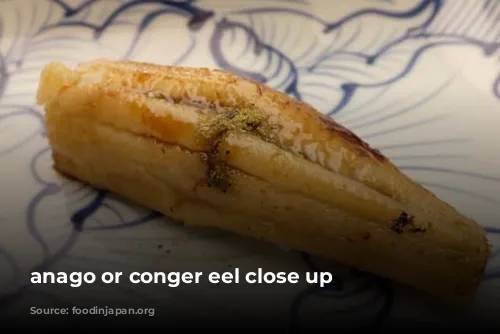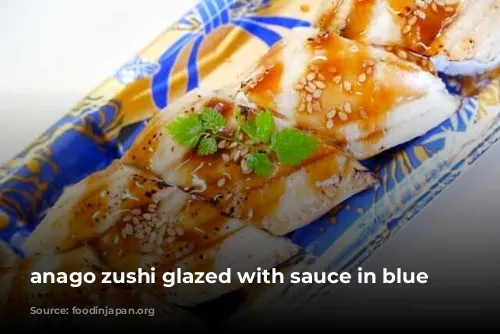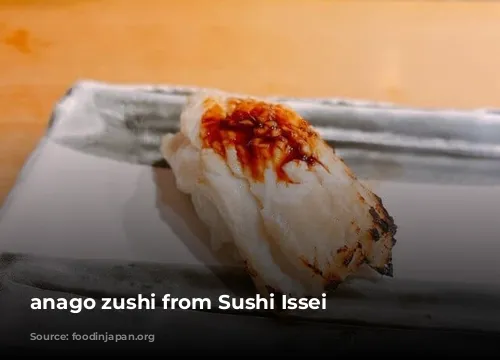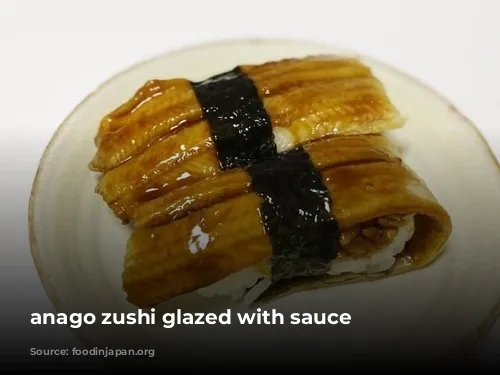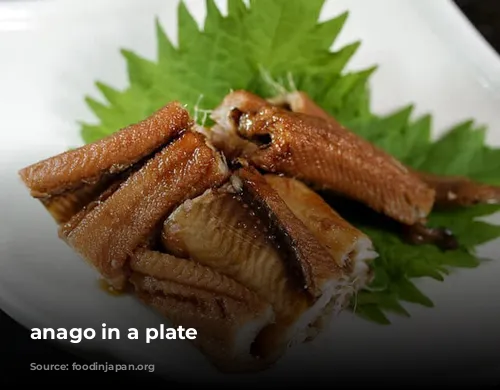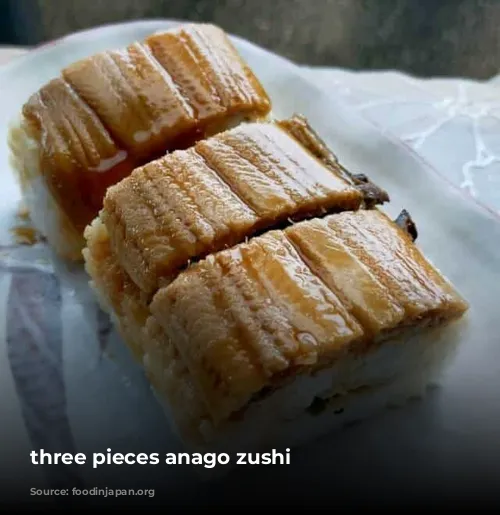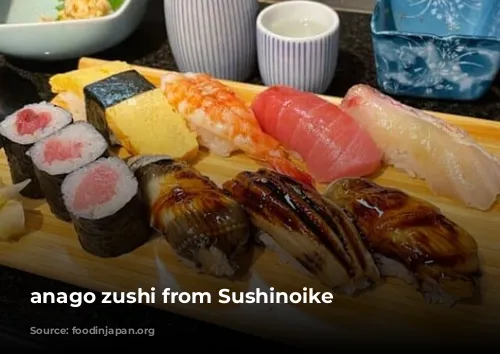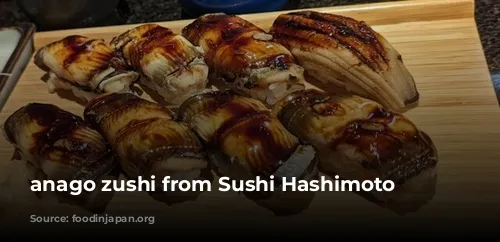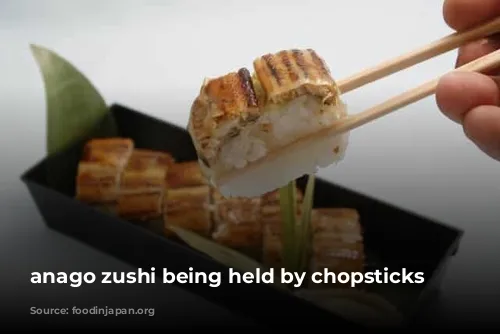Anago zushi (穴子寿司), also known as “Conger Eel sushi,” is a unique and beloved sushi dish that showcases the subtle flavors and delicate texture of cooked conger eel. This saltwater eel is a staple ingredient in Japanese cuisine, and its popularity stems from its light, refreshing taste and soft, melt-in-your-mouth texture. Let’s explore the fascinating world of Anago zushi and discover why it’s so cherished in Japan.
A Culinary Journey Through Time: The Evolution of Sushi
The origins of sushi can be traced back to Southeast Asia, with the creation of Narezushi, a fermented fish dish used as a preservation method. During Japan’s Nara period, this fermented sushi was presented to the imperial court as a tribute. Sushi continued to evolve, with pressed and boxed sushi emerging in the Kamakura period.
The Edo period saw a significant shift with the introduction of rice vinegar, leading to the creation of Hayazushi, a non-fermented sushi. The invention of nigiri sushi during this period, initially served in rice ball-sized portions, marked a turning point. The Meiji period saw the inclusion of sashimi as a common topping.
The 1900s witnessed the rise of the ice-making industry, enabling safe handling of raw fish in sushi restaurants. The Taisho era brought the introduction of electric refrigerators, leading to greater variety in sushi toppings and the emergence of smaller sushi restaurants. Finally, the Showa era brought the revolutionary concept of conveyor belt sushi, making this delicious cuisine more accessible and affordable to a wider audience.
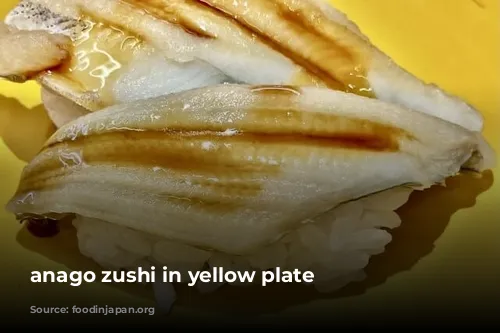
The Allure of Anago: A Culinary Gem
Conger eel is a versatile ingredient in Japanese cuisine, and it plays a crucial role in Kansai sushi. While freshwater eel (unagi) is often favored for its rich flavor, conger eel (anago) offers a lighter, more delicate taste. This difference in flavor is attributed to the lower fat content of conger eel.
Anago zushi is a testament to the culinary versatility of conger eel. This soft, succulent eel is brushed with a sweet, soy-based sauce called “tsume” before being served on top of vinegared rice. This delicious combination is enjoyed both as a standalone dish and as part of a sushi assortment.
A Seasonal Delicacy: Summer and Winter Anago
Unlike many fish, conger eel is prized for its light flavor during its summer season, when it is less fatty. This seasonal delicacy is a true treat for sushi lovers. During the winter months, Densuke conger eel provides a slightly different flavor profile, offering a more substantial experience.
The Nutritional Benefits of Anago
One piece of conger eel sushi contains around 61.9 Kcal, making it a relatively low-calorie option. Additionally, it is a rich source of vitamin A, known for its anti-cancer properties. While the boiled tsume might contribute to a higher calorie count, the abundance of vitamin A makes this dish a nutritious choice.
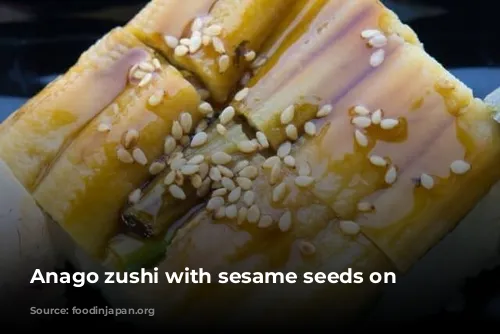
Conger Eel Production Areas: A Geographical Journey
Conger eel production areas span the Japanese archipelago, each with its own unique characteristics. Edomae, known for its exceptional quality, is a celebrated production area. Other notable areas include Akashi off the coast of Miyagi Prefecture, Nagasaki Tsushima, and Shimane, each contributing to the variety and quality of conger eel available in Japan.
Anago vs. Unagi: Understanding the Difference
Anago and unagi, both eel varieties commonly used in Japanese cuisine, offer distinctive flavor profiles. Anago, the saltwater conger eel, is known for its lighter, milder taste, while unagi, the freshwater Japanese eel, boasts a richer, sweeter flavor. This difference stems from the fat content, with unagi being significantly fattier.
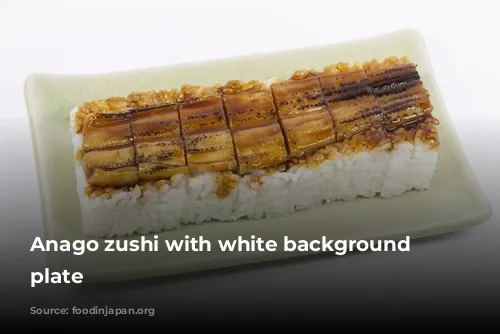
Unveiling the Secrets of Edomae Anago Zushi
Sushinoike, a renowned restaurant in Yanaka, is frequented by celebrities and cultural figures for its exceptional Edomae-style anago zushi. This dish is known for its fluffy texture and delicious flavor, even when enjoyed cold.
The lunch menu, featuring lightly grilled Edomae anago, is a delightful experience. The perfectly cooked anago melts in your mouth, complemented by a combination of sushi that includes bluefin tuna, medium fatty tuna, amberjack, mackerel, a thick-grilled egg, a maki roll, and soup.
Sushinoike’s meticulous attention to detail extends to the sushi vinegar, which uses a small amount of red vinegar to enhance the flavor without discoloring the rice. This delicate acidity creates a harmonious balance with the various toppings, ensuring a truly unforgettable sushi experience.
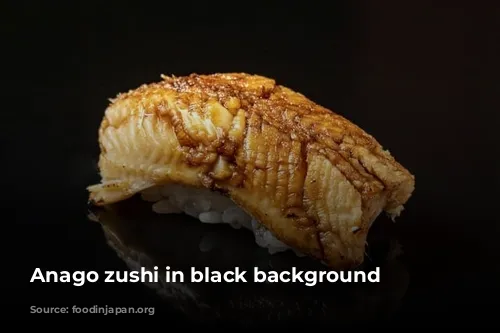
Conclusion: A Culinary Treasure
Anago zushi is a true testament to the diverse culinary landscape of Japan. Its delicate flavor, soft texture, and nutritional benefits have made it a beloved dish among sushi enthusiasts. By understanding the cultural significance of anago zushi and the distinctive qualities of conger eel, we gain a deeper appreciation for this unique sushi variety. Whether you’re a sushi aficionado or simply curious about Japanese cuisine, anago zushi is a must-try.
